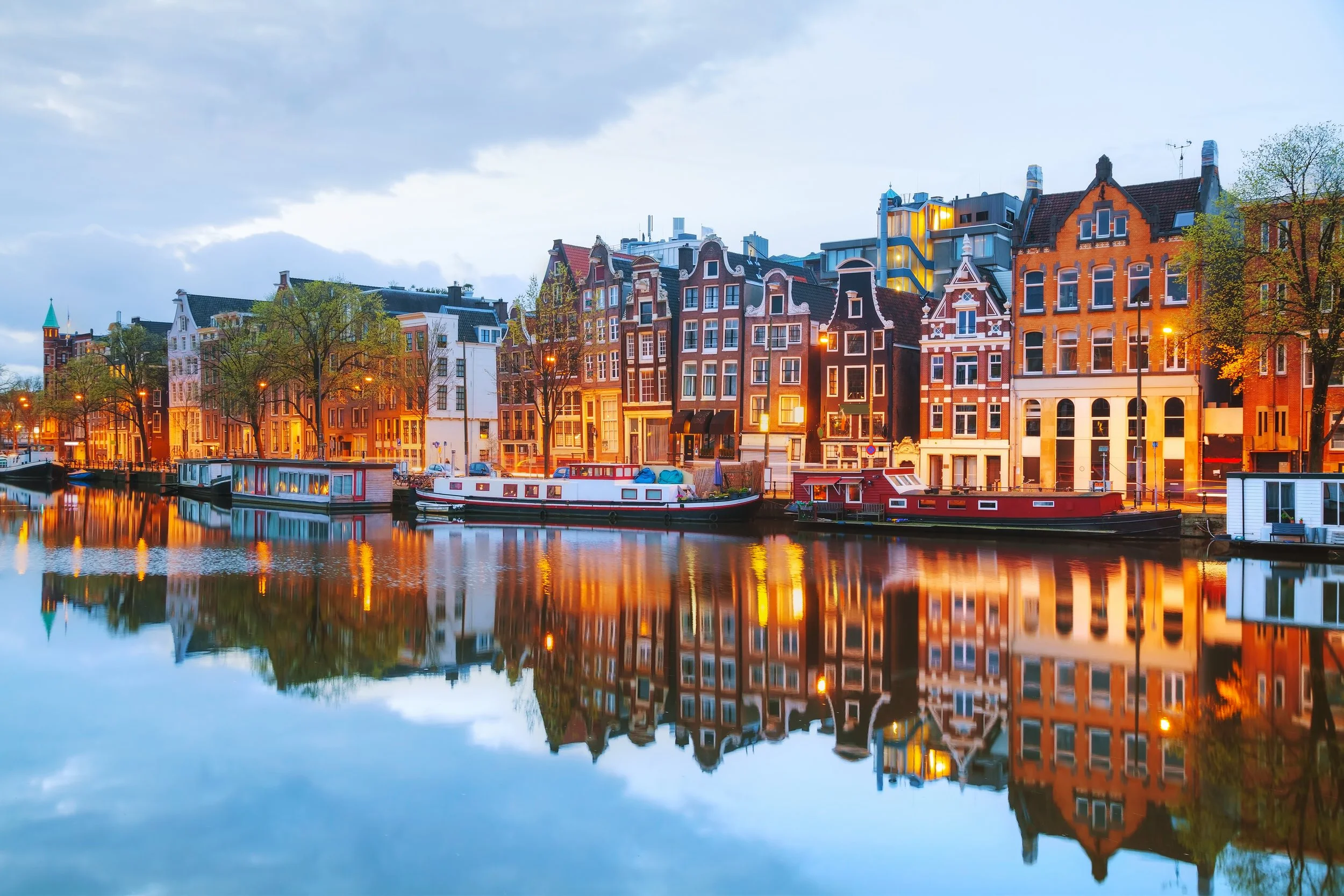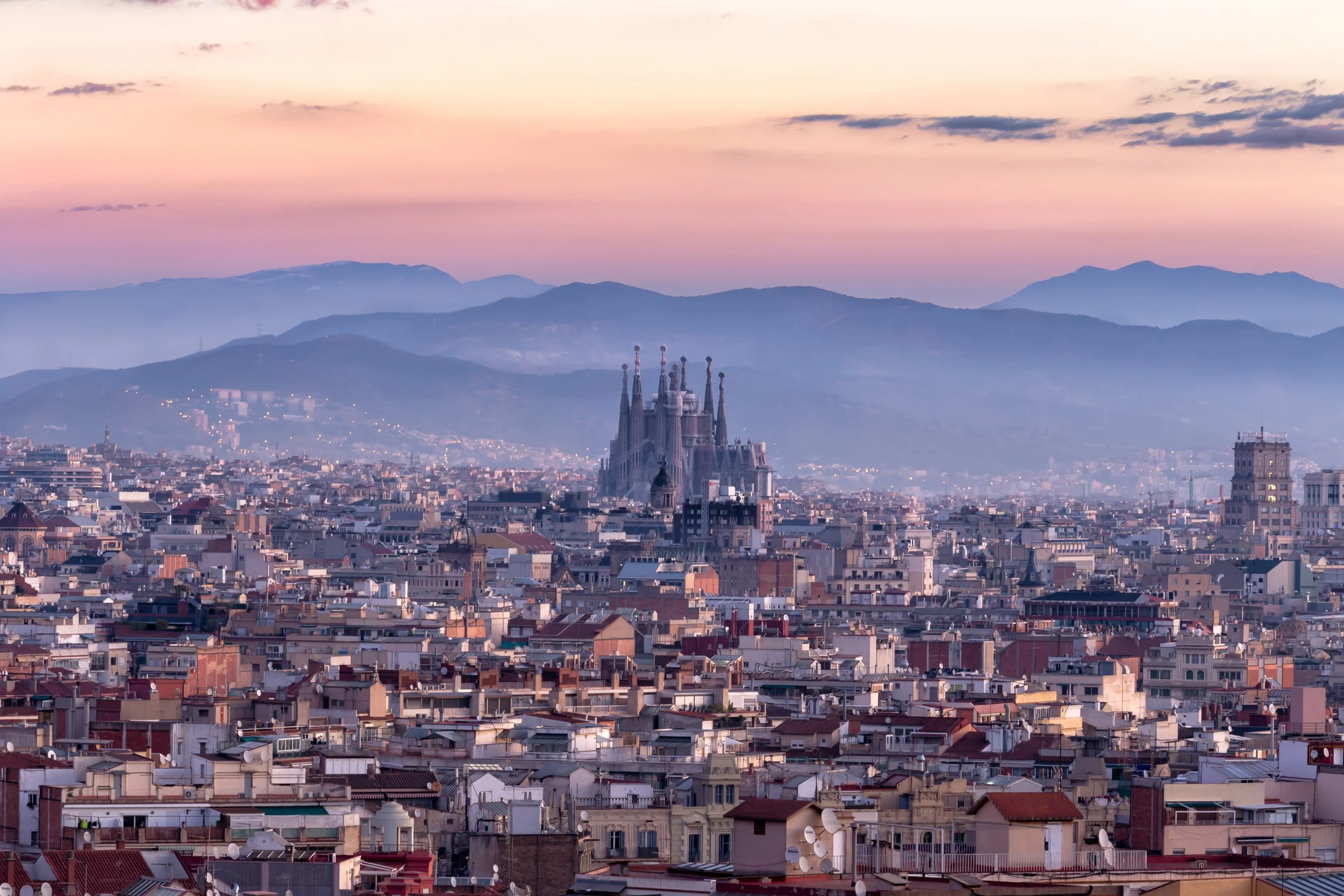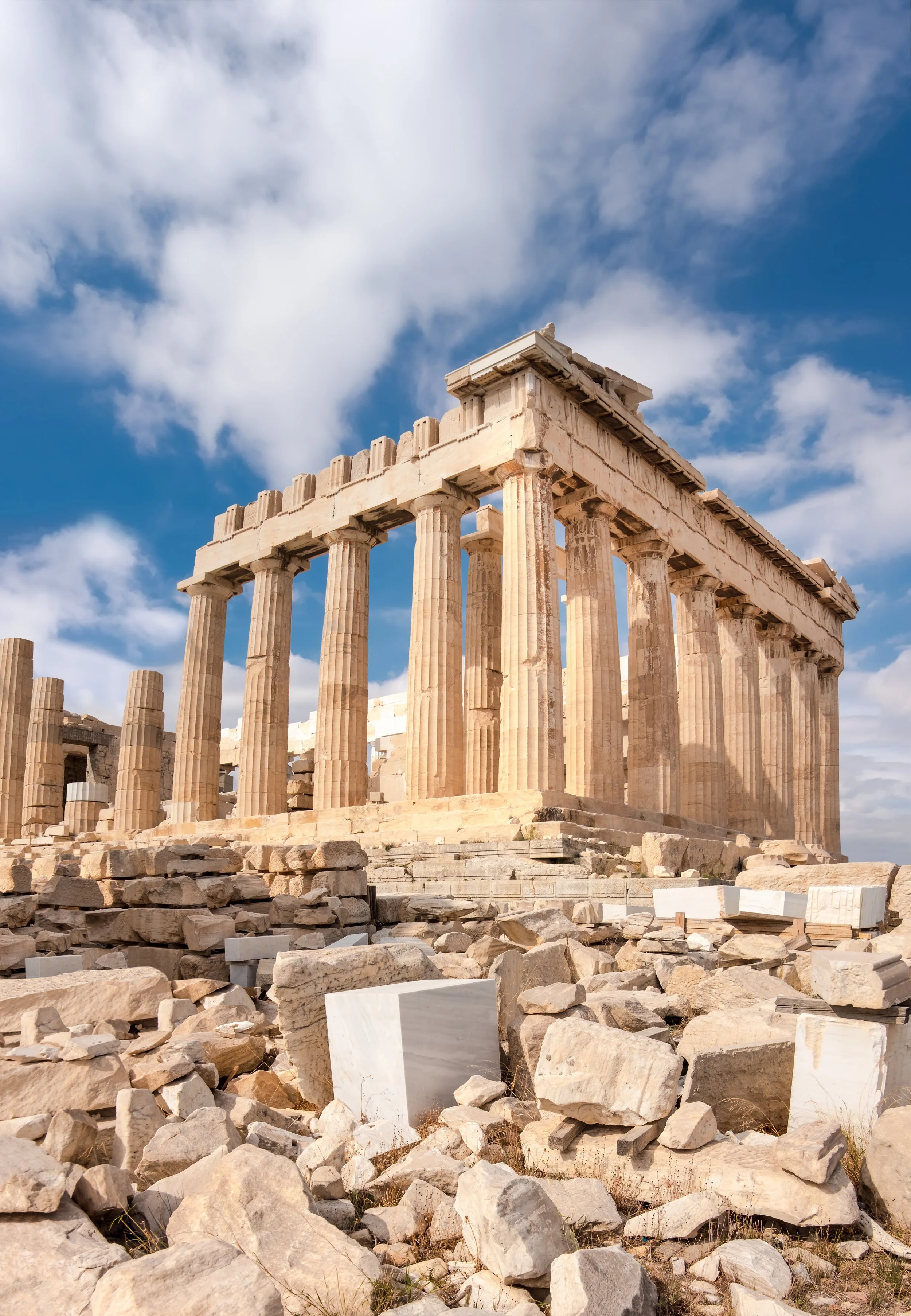A History of The Ancient City of Alexandria
Hi, I'm Mitchell Rocheleau, I'm an architect searching the world to find out more about the buildings that humans have created, from prehistory all the way to the modern era. I believe that our buildings can reflect the culture and context of the people who built them and can reveal fundamental insights about ourselves. Using architecture as our lens, we can better understand who we are and how to design environments for our future that support our vitality and growth.
Today I want to talk about the ancient city of Alexandria. Alexandria is often overlooked when in comparison with ancient Athens or Rome. However, this city does deserve some further investigation due to its interesting philosophies, ideas, and concepts that it was conceived upon, primarily those of Alexander the Great, and how he conceived the city, how he founded it, and how he began to lay out the preliminary planning of the city.
The founding of Alexandria can be traced back to the Greek moral philosophers. So, if we look at the first Greek moral philosopher Socrates, a student of Socrates was Plato. Plato opened the Platonic Academy and one of Plato's students was Aristotle. Aristotle would be hired by King Philip II to tutor Alexander the Great. He would tutor Alexander on ideas of politics, ethics, moral philosophy, languages, mathematics, science, and he'd give Alexander a really well-rounded education.
One of the core principles that Aristotle would train Alexander in is the concept of Arete, or it's the pursuit of excellence. So, in that pursuit of excellence, Aristotle embodied the need for intense study, contemplation, reflection, meditation. You can see how a young mind starts to become molded and influenced by some of these deeply philosophical intellectual tenants. Although Alexander would take a very different path in his life, he would still, as we'll see later, continue to embody many of these concepts and principles in his personal life, in his politics, and most notably in this city, Alexandria, that he would found and develop.
As we all know, Alexander would have the goal to set out and conquer the known world. So, he'd seek to conquer parts of Persia, Egypt, parts of India, and bring the Hellenistic or Greek culture into those areas. On that journey, at around 331 BC Alexander would travel to the island of Pharos in northern Egypt. Now Pharos was an important island for Alexander because it was mentioned in the Odyssey. So, it was in one of the Homeric homes that he had been exposed to while studying with Aristotle. He was a huge fan of the Iliad and the Odyssey. And so this idea or the myth of the island of Pharos in the Odyssey had a strong presence in Alexander's mind. So when he traveled to Pharos, it was this really kind of fulfillment of a prophecy journey for him.
When he landed on the island, he looked at the surrounding landscape, the geography, the location as a whole, the macro, micro climates, the accessibility to the waterways. In addition to being close to the Nile River Delta, it was also bordered on the south side by a large lake, so it had a large body of fresh water to itself. It had the Mediterranean Sea to the north, it was adjacent to the Nile River Delta, but yet it was out of range of the annual floods of the Nile. Alexander recognized these natural features and in addition to those, it being kind of this mythological place of significance, he decided that he would establish a city here. Another feature that Alexander recognized upon landing in Pharos was the presence of the papyrus plant. So, the papyrus plant would play a significant role later in the history of Alexandria and Alexander knew this. He knew that the papyrus plant could be used for many different things. It could be used for building construction, tools, home goods. The Egyptians had been using papyrus for centuries leading up to this point. Most notably though the papyrus plant was used as a writing surface. The papyrus plant would play a key role in the city of Alexandria in the future.
Alexander, being of Greek origins, really understood that he was bringing the Hellenistic culture to Egypt, but he also wanted to incorporate or felt it important to preserve the native cultures, the native traditions of the country of Egypt. So his vision for this future city, this establishment that he was planning to create, blended and hybridized these two cultures so it was a combination of Greek and Egyptian cultures, Hellenistic cultures that kind of came together into one and would eventually create a city that was very unique. It was not like Egypt yet there were traces of Egypt. It was not like Greece or mimicking Athens or anything like that. It was a nice blend that combined these two very distinct powerful cultures at the time into one unique, beautiful city. This was shown first and foremost in the way that we believe that the architecture and the buildings, the site planning, the urban development of the city looked. It was truly, from what we know, a blend. So there were elements of Egyptian architecture. There were elements of Greek architecture. This idea of cultural tolerance, acceptance, inclusivity would also be played out in the conception of the library that we'll talk about later.
There's a really interesting planning myth about the city of Alexandria that tells the story of Alexander kneeling down in the dirt before the city was developed and beginning to draw out the grid of the city where the temples were, where the major monuments were. He drew up the grid of the city to take advantage of the natural winds coming off the Mediterranean Sea. He drew locations of Egyptian temples, of Greek temples. He drew a library with this accompanying museum. He had all these thoughts, which were eventually, would be, to some degree, played out in the development of the city. After Alexander the Great passes away, they would bring his body back to Alexandria and begin developing the city.
When planning the city, they laid out public parks, temples, grand avenues. At the center of the city, they designed a large thoroughfare called the Canopic Way. On the western end of the Canopic Way, they built a gate which was called the Gate of the Moon and on the eastern side of the Canopic Way, they built what's called the Gate of the Sun. So those two ends of the city or bounds kind of created this long thoroughfare where the city grid could be accessed and this main thoroughfare allowed people to circulate cleanly, it was a large eight lane thoroughfare through the middle of the city. They designed and developed the ports or harbors in the city. They built a connection, what they believed was some sort of bridge or land mass connecting the mainland, Alexandria, to the island of Pharos, which what they did was separate and create two different harbors on either side of the island. This was important because the city of Alexandria became a large import and export location, specifically for the city of Rome. It would export wheat, grains, different types of agricultural products and papyrus specifically to Rome, which is said to have contributed massively to helping feed the growing population of Rome at the time.
I'll talk more about the two primary architectural features of the city of Alexandria that most of us have heard of or know of. That would be the lighthouse and then the library. So, the lighthouse of Alexandria was built really to address this functional need, like I had mentioned, of the shipping, the important export industry growing in Alexandria, to help ships off the coast of Northern Africa and Egypt to identify the city. So, this coastline, of coming from the ocean, was difficult to identify where the city was. But once the lighthouse was constructed it became this beacon of light quite literally that would help bring ships into the harbor. It also took on what would be a more symbolic identity as a beacon of light for the city of Alexandria, as in a beacon of knowledge, a beacon of power that would draw people to the city.
The architecture of the lighthouse is, there's been some descriptions of that. The way it was described is a three-tiered structure on kind of a circular plinth or base and on the top of it was a mirror that they used to either light fire or reflect the sun to kind of disseminate the light out into the sea. On top of that, we believe there was a statue of Zeus on it. The lighthouse was made or clad in bright white limestone. So, during the day, the sun would shine on this lighthouse. And not only would you see the kind of reflection created from the mirror, but this thing would also gleam in the sunlight set against the backdrop of the city.
In Islam Issa's book, Alexandria, he equates the lighthouse on Pharos to something of a contemporary Lady Liberty, Statue of Liberty. It's this icon, it's this monument that is signifying to people coming into the city. You're entering this special place. Eventually over time, the lighthouse would fall into disrepair. It did have about seven centuries of operation and 17 in disrepair. The stone from the lighthouse would be then used to clad the citadel that sits there today. There's also lots of sea exploration, underwater exploration happening right now from, I think, it’s a French team and it's starting to uncover or has uncovered quite a few remnants and fragments of the lighthouse underneath the sea.
The other architectural monument in the city and well known throughout the world is the Library of Alexandria. Now I wanted to save this for the end of the discussion because it's really this library that makes Alexandria such a unique city. This library was a direct interest of Alexander the Great's and undoubtedly coming from his lineage. He wanted to accumulate and assemble all of the knowledge in the world, is kind of how it is often phrased. So, Ptolemy wanted to see this vision through. So, Ptolemy, I think it was the first through the third, they directed crews of men to go out into the known world at the time, into Mesopotamia, Asia, all over the world to collect all of the books that they could possibly find, the texts. They wanted to create a depository of information. Now this is a radical concept at the time. There was no curation or vetting of information like there had been in previous civilizations where old libraries were really directed towards a specific religious idea or a specific culture. This library was meant to house all of the information in the world and this was a conscious endeavor.
In the library the scribes began to organize and catalog all of the books that were brought into the city. The books were in the form of a scroll rather than a book as we know it today. That type of book wouldn't be invented until several centuries later. But these scrolls had little clay tags on them with small string to help organize and catalog them in the library. Scholars from all over the world began to flock to Alexandria to begin to participate in this kind of accumulation and growth of knowledge. Massive improvements and developments in all kinds of fields, science, mathematics, astronomy, ecology were developed during this time in the city. These scribes were also exempted from taxes and given special privileges to come and help to contribute to the growth of the library. Many of the citizens in Alexandria became peeved that the scholars and scribes were getting a special treatment and they voiced this at city gatherings and there were a few uprisings within the city. A popular topic is the burning of the library of Alexandria and yes, the library did suffer through accidental fires set by Caesar. However, this is often in popular culture portrayed as one kind of cataclysmic event where all of the information was lost. However, it wasn't just the singular event. It was most likely based upon new findings, kind of the slow degradation of the library, decommissioning of the library over time, with a series of events, one of them being the fire.
So why is the city of Alexandria important? Why is the library, the lighthouse, why are these things important from an architectural perspective and for a general audience? For me, the library, the presence of the library, the conception of the library, it represents a shift in kind of human development. Previously, cities were built prior to Alexandria and this development of the Greek moral philosophers, the stressing of the importance of knowledge, accumulation, wisdom, philosophical thought, intellectual discussion. This wasn't a, let's call it, a primary or keystone principle in the development of cities. Yes, there were libraries, there were depositories of information in cities prior to Alexandria. But through Alexandria, we see this kind of real conscious development of a city around the accumulation, this storage, the growth of knowledge, wisdom. From here on, in many cities that are developed after Alexandria, we begin to see libraries and depositories of information becoming central pieces of the development of the towns.
So why study ancient Alexandria? Through examining the city, I think it can prompt us to ask ourselves questions about the cities that we establish, develop, and grow today. What are the founding ideas, the values, the principles? If you go around and look at cities in our world, you can look at the values and the systems, the ideas that they were built upon. The primary one, I think, for our contemporary world being the accumulation of financial resources. Now, not saying that's either good or bad, but I think the larger buildings in our contemporary cities clearly illustrate that that is one of the higher values to us. And if we go back and look at that in comparison to ancient Alexandria, we can see that there was a very different value set. At that time, the value of wisdom, knowledge accumulation, thought provoking discussions, that to them was the value that I read from examining that city. And as an architect and people inhabiting cities, we can start to think what are those values that we are seeing today? And I think that's a really important thing to consider.
Thanks so much for watching. Feel free to have a look at our website and our YouTube channel, the website’s RostArchitects.com. You can read a more, kind of, full and comprehensive history and chronology of the ancient city of Alexandria on the website and then on the YouTube channel there's videos of ancient architecture, modern architecture, all issues kind of related to architecture history on the YouTube channel.
Thanks for watching.































Notre Dame Cathedral had the power to embed itself into more than just the cityscape. It made its way into the hearts of the people of Paris. When the Cathedral was engulfed in flames on April 15th, 2019, we were reminded that the architecture around us impacts our lives beyond functionality. Principal and Architect of ROST Architects, Mitchell Rocheleau, discusses the history, architecture, and the architectural power of Notre Dame Cathedral.